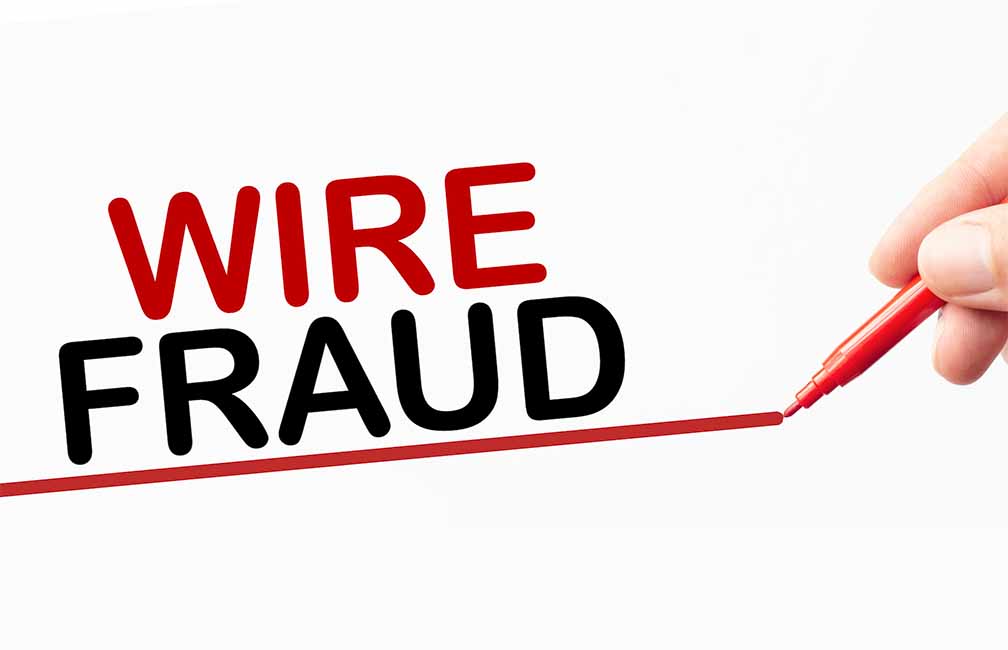Wire transfer fraud is a critical concern for businesses globally, involving the unauthorized transfer of funds from one bank account to another through deceitful means. This type of fraud exploits the speed and convenience of wire transfers, making it a preferred method for criminals to divert large sums of money quickly and often irretrievably. As businesses increasingly rely on electronic transactions, understanding and preventing wire transfer fraud has become more vital than ever.
Wire Transfer Fraud, Explained
Wire transfer fraud occurs when fraudsters deceive individuals or businesses into making wire transfers under false pretenses or by hijacking legitimate transfer details. Typically, the scam begins with the acquisition of confidential information, which can be achieved through hacking, phishing emails, or social engineering tactics. Once they gain access to sensitive data, fraudsters can impersonate company executives, vendors, or clients to initiate unauthorized transfers.
The sophistication of these scams can vary. Some involve highly crafted social engineering and advanced persistent threats where attackers dwell in a network undetected for a long time to gain deep insight into company processes and relationships. Others might use more straightforward methods, such as email spoofing, where they create an email address that looks strikingly similar to a legitimate one.
Common Examples of Wire Transfer Fraud
CEO Fraud
CEO fraud, also known as Business Email Compromise (BEC), involves scammers posing as company executives and sending fraudulent emails to employees. These emails typically instruct staff to make wire transfers to accounts controlled by the fraudsters. Often, these requests are made with a sense of urgency and confidentiality, which pressures the employee to act quickly without verifying the request’s legitimacy.
Invoice Fraud
In this scenario, a business receives a fraudulent invoice that appears to come from a legitimate vendor. The scammer might also pose as the vendor by email or phone requesting payment to a new bank account. Unwary employees who do not verify these changes can easily transfer funds directly to the fraudster’s account.
Account Takeover
Account takeover involves gaining unauthorized access to a company’s bank account details. After accessing the account, fraudsters can make unauthorized wire transfers or set up new fake beneficiaries to whom they divert funds. This type of fraud often results from phishing attacks or malware infiltrating company systems to steal login credentials.
Phishing Scams
Phishing scams trick employees into providing sensitive information such as login IDs, passwords, and bank account information. Fraudsters use this information to initiate unauthorized wire transfers. These scams often start with an email that appears to be from a trusted source but contains links to fake websites designed to harvest credentials.
How to Prevent Wire Transfer Fraud
Educate Your Employees
The first line of defense against wire transfer fraud is educating your employees about the risks and manifestations of these scams. Regular training sessions should be conducted to familiarize them with the common tactics used by fraudsters, such as phishing and social engineering. For example, employees should know how to identify and handle suspicious emails.
Implement Robust Verification Processes
Before executing any wire transfer, establish a mandatory verification process. This could involve dual approvals, phone verification using known numbers, and cross-checking with internal records for any changes in vendor payment details. Always ensure that these procedures are followed, regardless of the urgency of the request.
Use Advanced Email Security Tools
Deploy advanced email security solutions that can detect phishing attempts, email spoofing, and unusual senders. Cybersecurity tools that offer real-time scanning and alerting for suspicious links and attachments can significantly reduce the risk of email-based wire transfer fraud.
Monitor and Respond Quickly
Monitoring account and transaction activity can help in the early detection of any unauthorized transactions. Setting up alerts for unusual activities, such as large transfers or modifications to beneficiary details, can enable timely action to stop or reverse fraudulent transactions.
Cultivate a Culture of Security
Promote a culture where security is a priority. Encourage employees to report suspicious activities and provide them with clear protocols for reporting. A culture that empowers employees to ask questions and double-check details without fear of reprimand is essential for preventing fraud.
Wire transfer fraud represents a significant threat to the financial integrity of businesses. By understanding its dynamics and implementing a combination of employee education, strict verification protocols, advanced security technologies, and a strong organizational emphasis on security, businesses can significantly mitigate the risk of falling victim to these costly scams. Engaging employees in these processes not only helps protect the company but also enhances their own sense of responsibility and vigilance in everyday transactions.
Discover our Certified Fraud Specialist Certification
Wire transfer fraud is on the rise. With BankersHub’s Certified Fraud Specialist (CFS) course, banking and credit union professionals can learn or refresh insights and actions they can take to mitigate fraud activities and protect their institution and their customers’ resources. This 8-course on-demand training is self-paced for your convenience. There’s no time limit for completion! The certificate of completion is valid for two full years. Register today!








